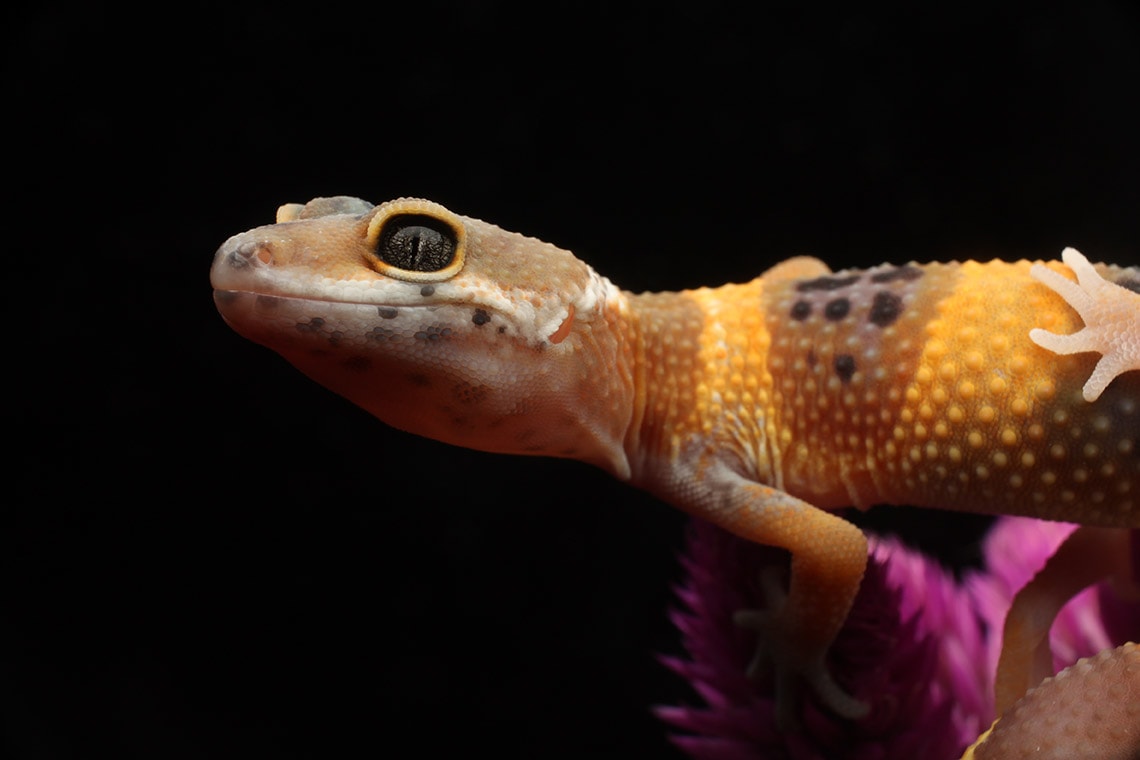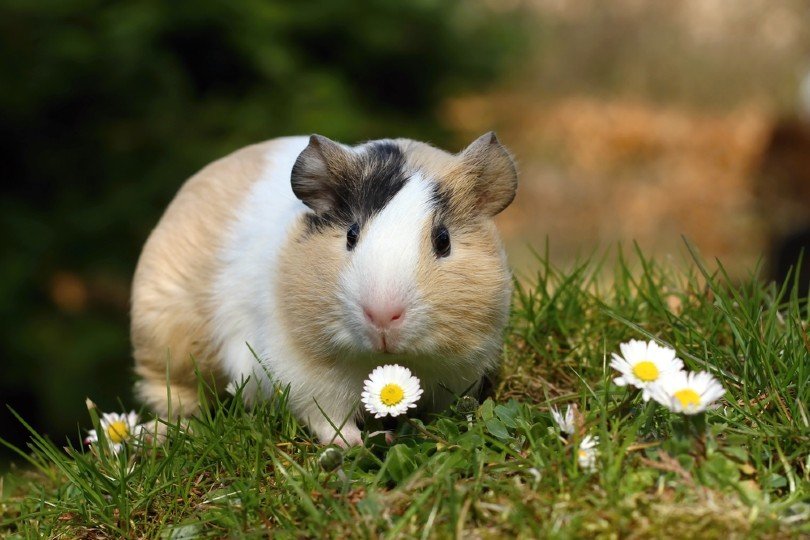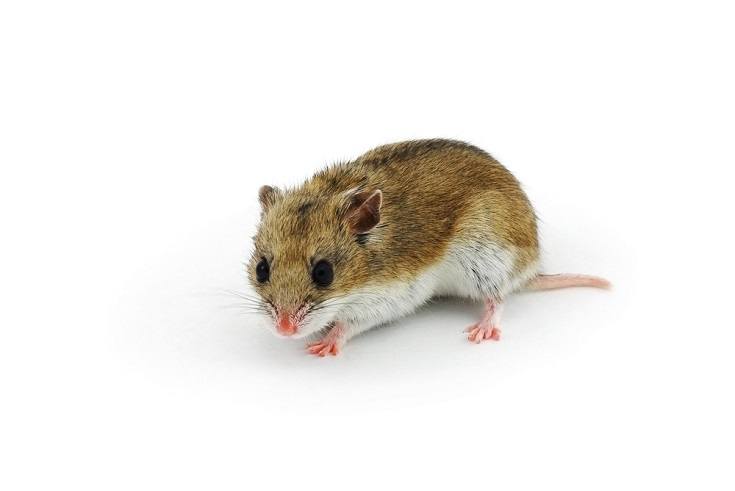Click to Skip Ahead
The Tangerine Leopard Gecko is a beautiful morph with bright orange coloring and different patterns and shades. Leopard Geckos are popular pets due to their ease of care and independent nature. They don’t need much interaction from their owners. They are fascinating creatures to observe, and in captivity, they can live for up to 20 years and beyond in some cases.
Tangerine Leopard Geckos are one of many Leopard Gecko morphs, and their primary care requirements are no different from any other Gecko. In this article, we’ll discuss the housing, diet, and care requirements for these uniquely beautiful animals.

Quick Facts About Tangerine Leopard Gecko
| Species Name: | Eublepharis macularius |
| Common Name: | Tangerine Leopard Gecko |
| Care Level: | Low |
| Lifespan: | 15–20 years, occasionally up to 30 years |
| Adult Size: | 7–10 inches |
| Diet: | Carnivorous (Crickets, mealworms, waxworms, butter worms) |
| Minimum Tank Size: | 10 gallons |
| Temperature & Humidity:
|
80°–82° Fahrenheit (day), 70°–80° Fahrenheit (night), 30%–40% humidity |
Do Tangerine Leopard Geckos Make Good Pets?
Leopard Geckos are generally friendly, mild-mannered, non-aggressive, and rarely bite, so they make ideal pets for beginners. While they don’t enjoy being handled much, they are not fast or skittish, so there is no risk of dropping them.
They do not require much cage maintenance and are hardy animals that can tolerate a less-than-perfect living environment. They are generally docile, slow-moving, and easy to tame, and they can be handled daily, although not for long periods, to avoid stressing them. For all these reasons, Leopard Geckos make excellent pets, especially for beginner reptile enthusiasts.
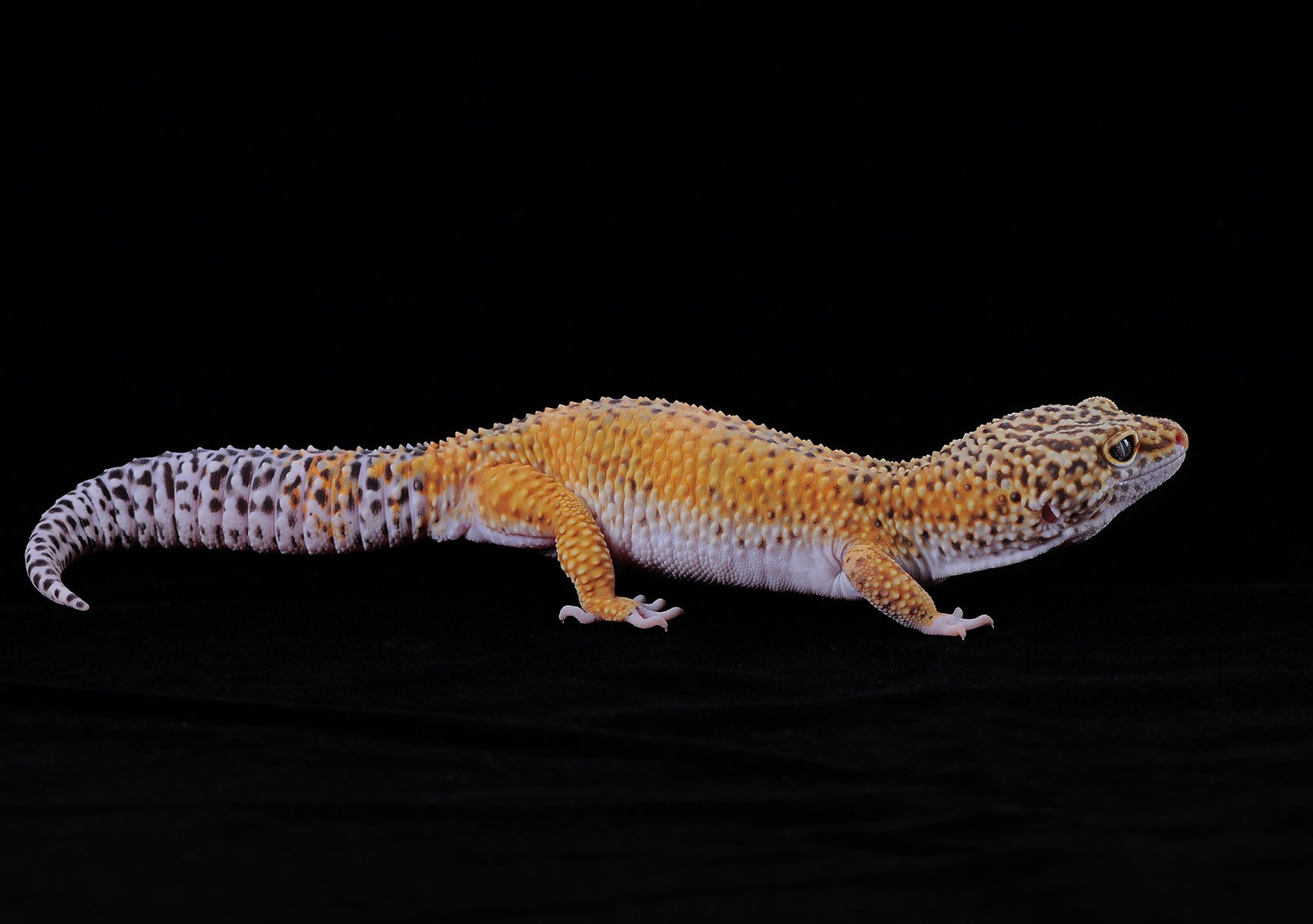
Appearance
A Leopard Gecko that displays any shade of orange in their coloring can be considered a Tangerine morph. They can be spotted or blotched with darker orange to red patterning and can have black stripes or spots on their tail. Some Tangerine Geckos have vivid orange coloring and are known as “Super Hyo Tangerines.” They can fetch much higher prices than Geckos with less intense coloring.

How to Take Care of Tangerine Leopard Geckos
One of the biggest draws of Leopard Geckos for beginners is that they do not need a large tank setup and little maintenance.
Habitat, Tank Conditions & Setup
Tank
A glass aquarium with a lid is ideal for a Leopard Gecko, and an old unused fish tank is perfect. Ten gallons per Gecko and an additional 5 gallons for every Gecko you add is a good minimum. You’ll need to spot-clean the tank once a day to remove feces or uneaten food and do a full clean about once a month. Remove everything from the cage, dispose of the substrate, and scrub and disinfect the cage and all the accessories to reduce the chance of bacteria build-up.
Lighting
Leopard Geckos are nocturnal and thus do not require much UV lighting, but a small amount (2%-7%) is recommended because they are active during sunset and sunrise in the wild. They’ll need an incandescent light to mimic sunlight; in summer, they need around 14 hours of light. This can be reduced to 12 hours during winter. A timer is a handy and inexpensive tool to keep the lights automated.
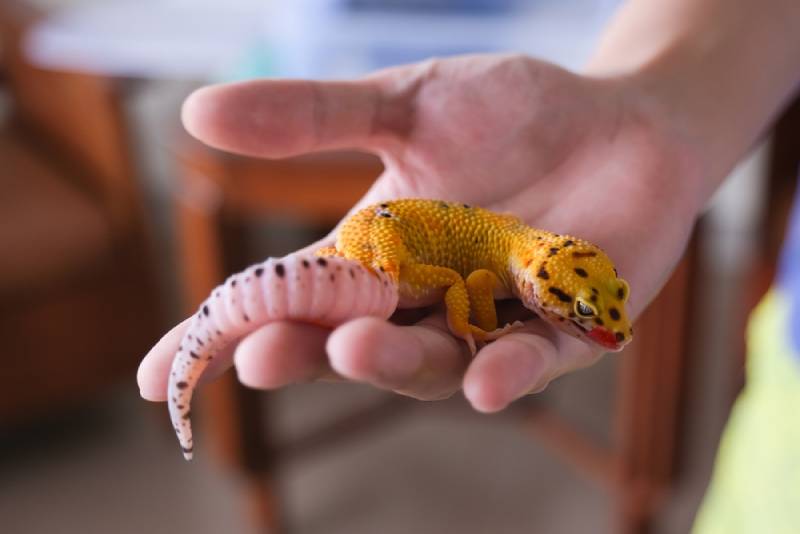
Heating (Temperature & Humidity)
You’ll need to provide a hot and cool side in their cage so they can choose their ideal temperature. A heat lamp can easily heat the hotter side of the enclosure, but heat rocks are not recommended because your Gecko may get burned. An ideal daytime basking spot of around 88 degrees Fahrenheit with a thermal gradient down to around 75 degrees Fahrenheit in the rest of the cage. At night, the temperature can drop to 70–75 degrees Fahrenheit.
Leopard Geckos are originally from desert areas and need 3%0-40% humidity in the enclosure. This is about the average humidity level for most homes, and a lid should help keep the humidity constant. If the humidity level is too low, your Gecko will have trouble shedding, so a hygrometer is a great accessory to monitor the humidity.
Substrate
Various substrates are suitable for Leopard Geckos, but you should avoid using sand because it can cause eye issues and digestive blockages and wood shavings because they can hurt your Gecko’s feet. Newspaper, pea gravel, artificial turf, flat stones, tiles, and reptile carpets are all great substrate choices. No matter what you choose, make sure your Gecko cannot ingest it.
| Tank Recommendations | |
| Tank Type | 10-gallon glass tank |
| Lighting | UVA/UVB with a dedicated heat lamp |
| Heating | Heat lamps or heat mats |
| Best Substrate | Newspaper, Gravel, Stones, Reptile carpeting |

Feeding Your Tangerine Leopard Gecko
Feeding a Leopard Gecko is simple; they are insectivores and do not eat plants or vegetables. The best food for Geckos is live, gut-loaded crickets, but they can also occasionally consume mealworms, silkworms, and waxworms. Dusting your crickets with powdered supplements is a great way to ensure your Gecko gets all the necessary vitamins and minerals.
| Diet Summary | |
| Fruits | 0% of diet |
| Insects | 100% of diet |
| Supplements Required | Powdered vitamin D3 and calcium supplements |
Keeping Your Tangerine Leopard Gecko Healthy
If your Leopard Gecko has a tank with the correct temperature and humidity levels, is fed on a healthy diet of gut-loaded insects, and gets enough calcium and vitamin D3 supplementation, they will be generally healthy and have a long lifespan in captivity.
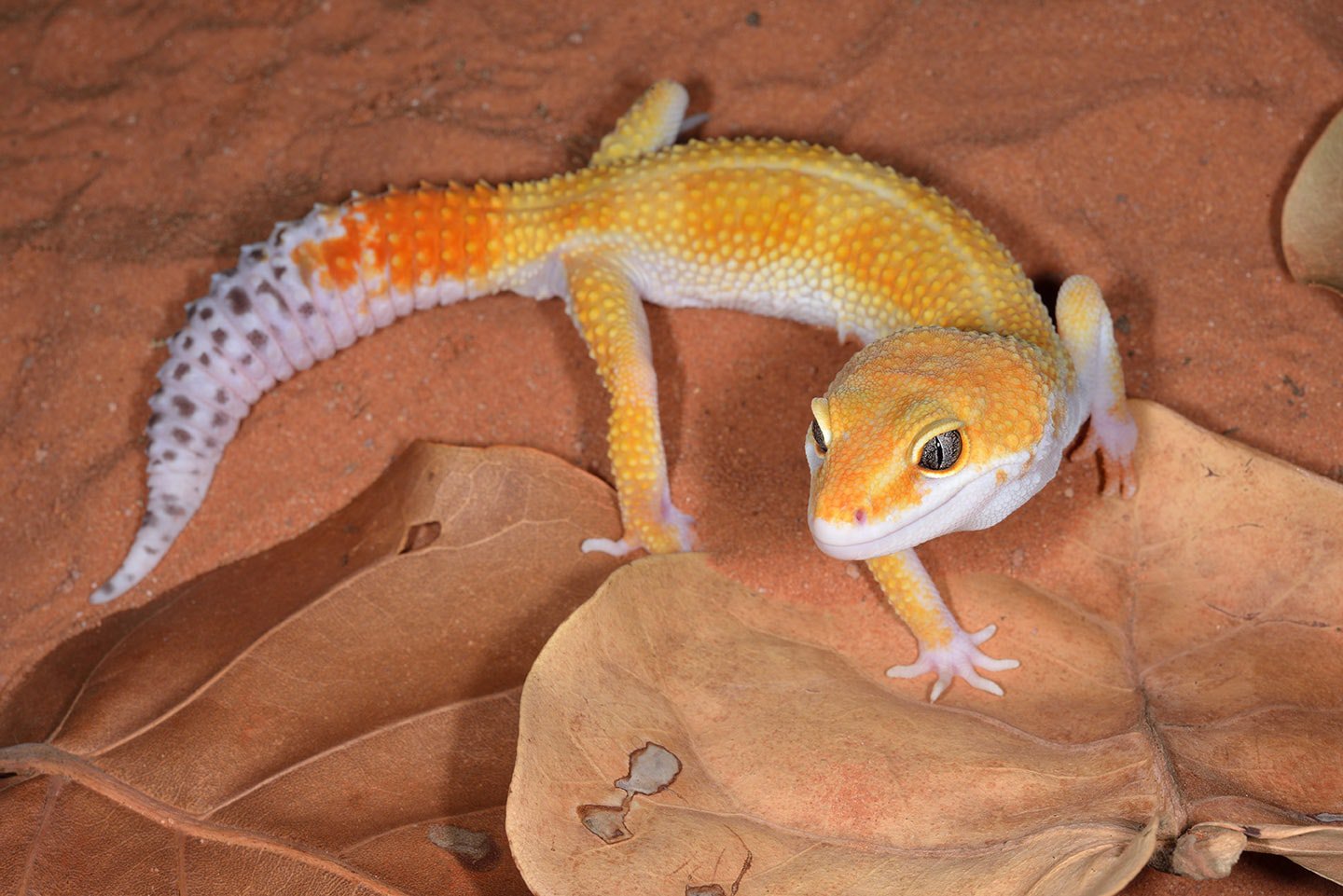
Common Health Issues
Metabolic bone disease is one of the most severe conditions that can afflict Leopard Geckos. It results primarily from insufficient vitamin D3 and calcium, which can lead to painful deformities. They are also prone to gastroenteritis, a bacterial infection that is treatable but can be fatal.
Dysecdysis is another common issue that can make shedding difficult for your Gecko, and they can be prone to respiratory issues if they live in an environment that is too moist.
Lifespan
In the wild, Leopard Geckos evade several predators, including birds and snakes, and thus, they have an average lifespan of 6–8 years. In captivity, they can easily live for 10–20 years, and in rare cases, they have been recorded living up to 30 years!
Breeding
Leopard Geckos are easy to breed in captivity, and a male and female housed together will swiftly produce fertile eggs. Your female will need a small laying box filled with a soft substrate like peat moss. Once she has laid eggs, you can remove and incubate them to ensure a better chance of success. Raising hatchling Geckos can be a challenging yet rewarding experience!

Are Tangerine Leopard Geckos Friendly? Our Handling Advice
Leopard Geckos are friendly, docile, and non-aggressive animals that are generally easy to handle. Since they are slow-moving, they are great for children because they are unlikely to jump out of their hands. They can be handled daily, but this should be kept to a minimum to avoid stressing them out.
Shedding & Brumation: What to Expect
Like all reptiles, Leopard Geckos periodically shed their skin, but they have a slightly different process than other lizards. They shed their entire skin at once, similar to what a snake does; other lizards’ skin will flake off slowly. You’ll also notice your Leo changing color slowly, becoming duller, and eventually turning white as they shed.
In captivity, brumation is considered optional, and most Leos remain healthy and happy at the same temperature for their entire lives. Should you choose to induce it, brumation can last 30–90 days, at which time your Leo will hide in their den and not eat, though you should ensure fresh water is available.

How Much Do Tangerine Leopard Geckos Cost?
Since Leopard Geckos are readily available and easy to breed, they are inexpensive and typically cost around $30. Tangerine varieties are more sought after, and depending on how vivid their coloring is, they can go for $80 or more, with Super-Hypo varieties going for as much as $400.
Care Guide Summary
- Docile nature
- Easy to care for
- Simple housing requirements
- Non-aggressive
- Great for beginners
- Cannot be handled too much
- Easily stressed

Final Thoughts
For beginners, the Tangerine Leopard Gecko is a wonderful choice of reptile because they are easy to handle, have low housing requirements, and are non-aggressive. These beautiful reptiles are entertaining to observe in their tanks, and if you have a love and awe for reptiles and want to learn more about their habits, the Leopard Gecko is a great place to begin.
Featured Image Credit: Hatri Bidik, Shutterstock
